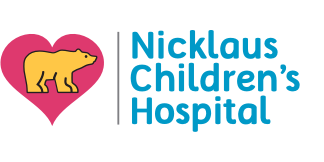- Parents Home
- Para Padres
- Allergy Center
- Asthma Center
- Cancer Center
- Diabetes Center
- Diseases & Conditions
- Doctors & Hospitals
- Emotions & Behavior
- First Aid & Safety
- Flu Center
- Food Allergy Center
- General Health
- Growth & Development
- Heart Health
- Homework Help Center
- Infections
- Newborn Center
- Nutrition & Fitness Center
- Play & Learn Center
- Pregnancy Center
- Q&A
- Recipes
- School & Family Life
- Sports Medicine Center
- Videos
- Kids Home
- Para Niños
- Asthma Center
- Cancer Center
- Diabetes Center
- Feelings
- Getting Help
- Health Problems
- Health Problems of Grown-Ups
- Heart Center
- Homework Center
- How the Body Works
- Illnesses & Injuries
- Kids' Medical Dictionary
- Movies & More
- Nutrition & Fitness Center
- Puberty & Growing Up
- Q&A
- Recipes & Cooking
- Relax & Unwind Center
- Stay Safe Center
- Staying Healthy
- Staying Safe
- Videos
- Teens Home
- Para Adolescentes
- Asthma Center
- Be Your Best Self Center
- Cancer Center
- Diabetes Center
- Diseases & Conditions
- Drugs & Alcohol
- Expert Answers (Q&A)
- Flu Center
- Homework Help Center
- Infections
- Managing Your Medical Care
- Managing Your Weight
- Nutrition & Fitness Center
- Recipes
- Safety & First Aid
- School & Work
- Sports Center
- Stress & Coping Center
- Videos
- Your Body
- Your Mind
A to Z: Hemiplegia
Hemiplegia (hem-uh-PLEE-jee-uh) is paralysis that affects the motor function of one side of the body.
More to Know
Hemiplegia is caused by damage to some part of the brain that disrupts the connection between the brain and the muscles on the affected side. Damage to the right side of the brain affects the left side of the body, and damage to the left side of the brain affects the right side of the body.
Hemiplegia can be congenital (meaning the brain is damaged before, during, or shortly after birth) or it can be the result of an injury or illness that damages the brain. Hemiplegia can cause stiffness, weakness, and a lack of control in the affected side of the body. It can be associated with a seizure disorder, vision problems, and speech difficulties.
Hemiplegia is a common side effect of strokes. In children, it is often associated with cerebral palsy. Treatment for hemiplegia focuses on controlling symptoms and retraining the body to recover as much ability as possible through rehabilitation therapy.
Keep in Mind
There is no cure for hemiplegia, but it doesn't get worse over time, and undamaged parts of the brain often can take over many of the functions of the damaged parts. Treatment and therapy (physical, speech, or occupational) can help minimize the effects of hemiplegia and help the affected side develop as fully as possible.
All A to Z dictionary entries are regularly reviewed by KidsHealth medical experts.

© 1995- The Nemours Foundation. KidsHealth® is a registered trademark of The Nemours Foundation. All rights reserved.
Images sourced by The Nemours Foundation and Getty Images.


